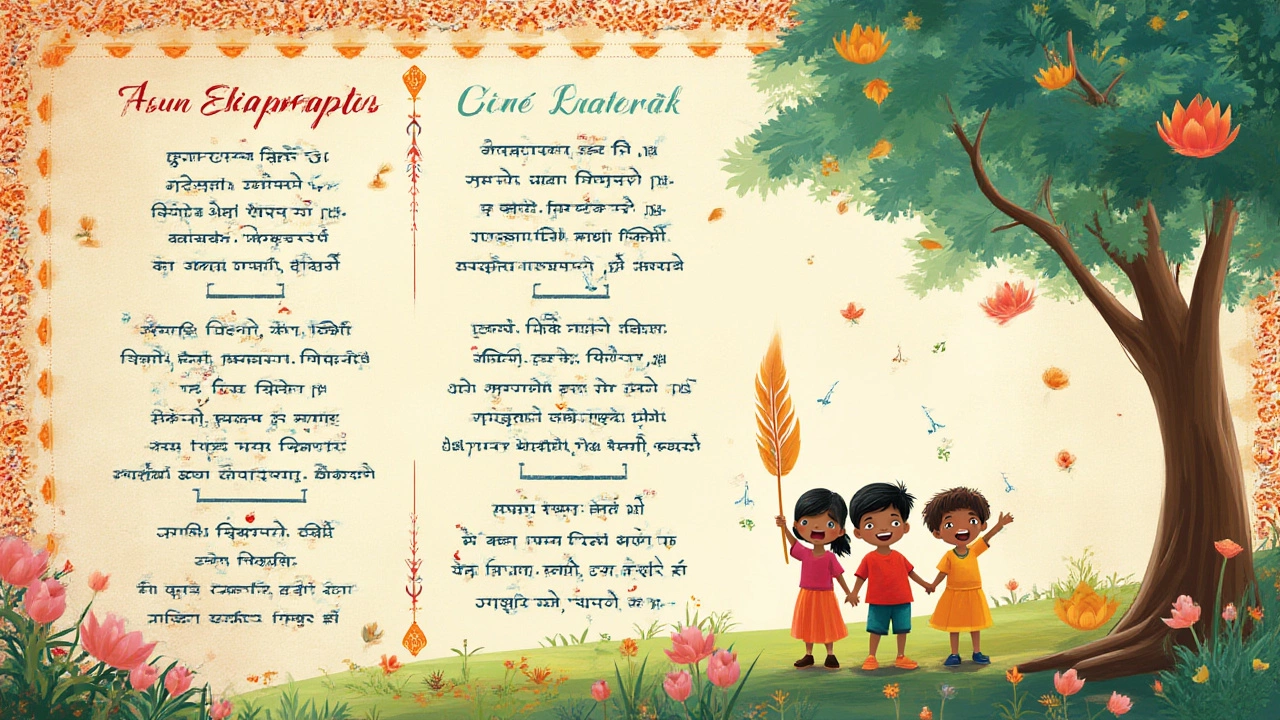
Ask any poetry lover and they'll have a favorite style—maybe the quick punch of a haiku or the elegance of a sonnet. But stumbling across a poem that's exactly five lines long almost feels like discovering a tiny secret garden. You might wonder, is there even a proper name for such a poem, or is it just an awkward in-between? Well, in the world of poetry, these poems have a name and some surprising stories behind them. Ready for a deep dive into this quirky, creative form?
What Is a 5 Line Poem Called? Breaking Down Quintains
The official term for a five-line poem is a quintain—sometimes also called a quintet. Imagine "quint" as in five, just like a quintuplet! In technical lingo, you'll hear poets in coffee shops call it a "pentastich" too, though that's rare in everyday conversation. But here's where it gets fun: not every five-line poem is created equal, and the term itself covers a rainbow of structures and rhyme patterns.
Different countries put their own twist on the quintain. For example, English poetry often features the "English quintain,” where rhyme and meter can dance any way the poet wants. Fancy a more structured challenge? The "Sicilian quintain" demands an ABABA rhyme scheme, which means the first, third, and fifth lines must rhyme, and the second and fourth do their own thing. In the 14th and 15th century, poets loved to use the Sicilian quintain for quick, emotional bursts—kind of like today’s viral tweets but with more iambic pentameter.
There's the "Spanish quintilla," a strict form with five lines, eight syllables each, and only two possible rhyme sounds. And then you have the "limmerick," the rock star of five-liners, known for its bouncy rhythm and cheeky punchlines (AABBA rhyme, if you’re a pattern lover). Each culture has woven these five-line gems into their own traditions, making quintain a term that packs a lot of punch for something so short.
Let’s put things into a simple table for quick comparison of common 5 line forms:
| Name | Origin | Rhyme Scheme | Syllable Count |
|---|---|---|---|
| English Quintain | England | Varies | Varies |
| Sicilian Quintain | Italy | ABABA | Usually 8-10 per line |
| Limerick | Ireland | AABBA | 7-9 per line |
| Quintilla | Spain | ABABA, ABBAB, etc. | 8 per line |
| Tanka (modified) | Japan | None required | 5-7-5-7-7 |
As you can see, "quintain" acts as an umbrella, covering many five-line wonders. Some poets don't mind bending the usual rules for a fresh, punchy effect—after all, even Shakespeare was a rule-breaker at times!

Why Poets Love 5 Line Poems: Creativity in a Small Package
You might think limiting yourself to just five lines would squeeze out creativity, but it actually does the opposite. Imagine trying to tell a joke, ask a question, and offer a twist—all within the space of a single sticky note. That’s the magic of the 5 line poem. It trains your mind to be sharp, bold, and concise.
Take the limerick, for instance. Edward Lear pretty much made this cheeky little form world famous in the 19th century with his whimsical, sometimes completely nonsensical verses. A ton of English speakers can recite at least one limerick, often learned as a kid. But not every 5 line poem has to be silly. For example, the modern tanka (technically Japanese, but often adapted as unrhymed English five-liners) is used for deep emotions and little epiphanies—a kind of quintupling of the classic haiku's vibes.
Need numbers? Let’s look at how often people play around with short poetry online. According to data from the Poetry Foundation, "short poem" and "5 line poem" are searched over 120,000 times per year on Google globally. Social media trends show that the #limerick tag has appeared on Instagram posts over 350,000 times as of June 2025, proving that five liners aren’t just grandma’s hobby.
There’s also the learning angle. Teachers love introducing young students to poetry through five-line poems, because the format is just challenging enough to get creative juices flowing but not so overwhelming it scares off beginners. The rules are flexible in many forms, so writers can experiment with rhyming or just tell a story in miniature.
Science even backs it up: research on cognitive development suggests that exercises like composing short, structured poetry can improve linguistic flexibility and emotional resilience. Plus, reading and writing short poems helps train our brains to recognize patterns and brevity—skills that help whether you’re sending texts, emails, or trying to impress on a dating app.
Sure, five lines sounds easy until you try to fit a universe in them. Poets describe the quintain as a "pocket challenge"—you really have to cut to the core, every word matters, and there’s no space to stumble. That’s why award-winning poets like Billy Collins and Mary Oliver occasionally turn to five-line forms for a little brain workout. They know constraints can be liberating.

Tips for Writing Your Own 5 Line Poems (And Mistakes People Make!)
So you want to try your hand at writing a five-line poem? Start simple. Pick a theme—anything from your morning coffee to a heartbreak to the sound of rain on your window. Next, decide whether you want to follow a specific form like a limerick or English quintain, or whether you want to go freestyle and invent your own rules.
If rhyme schemes make your palms sweaty, you aren’t alone. Many beginners get stuck rhyming “orange” and “door hinge,” only to realize you don’t have to force wordplay. Sometimes rhythm matters more than rhyme. Here’s a quick trick: write five lines about a memory, starting and ending with a word that feels important. Don’t overthink it. You can always refine the structure later.
- Common Rhyme Schemes: ABABA, AABBA, ABBAA, and ABBAB are all fair game for quintains.
- Want a tight structure? Go with an Irish limerick—three lines rhyme, then the other two rhyme with each other. Short lines for the punchy part, longer ones for setup.
- For less structure, the American ‘plain quintain’ is just five lines, your choice of rhyme or none.
A lot of new poets fall into two common traps. The first is overwhelming the poem with ideas. Remember, less is more—just like a tiny house has only the essentials, a 5 line poem does best with a single clear image or feeling. The second mistake? Ignoring sound and rhythm. Even free verse needs to sound good when you read it out loud. Record yourself reading; you’ll be surprised how much it helps!
Here’s an exercise to get you started: Set a timer for five minutes and write any five lines about what’s on your mind. Don’t edit, don’t judge, just write. When the timer dings, read it out loud. Circle the phrase or sound you like best—you’ve just found the heart of your poem. Now, rewrite with that as your starting point, and play with rhyme if you’re feeling daring.
Stuck for inspiration? Here are a few tips:
- Read lots of examples. Edward Lear, Ogden Nash, and more contemporary poets like Sarah Kay have great five-line poems.
- Watch YouTube videos of poets performing short forms—seeing the energy makes it easier to get excited.
- Try poetry writing challenges online—every April is National Poetry Month, and platforms like Twitter and Tumblr host quintain writing sprints.
If your first few attempts feel clunky, don’t sweat it. Writing great five-line poems takes practice. Even seasoned poets write drafts they never show. What matters is finding your voice inside that neat, precise frame.
The five-line form is proof that poetry is both a playground and a puzzle, perfect for anyone who loves words, rhythm, or just the fun of seeing what you can do with a little bit of space.